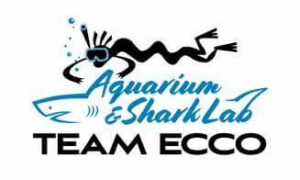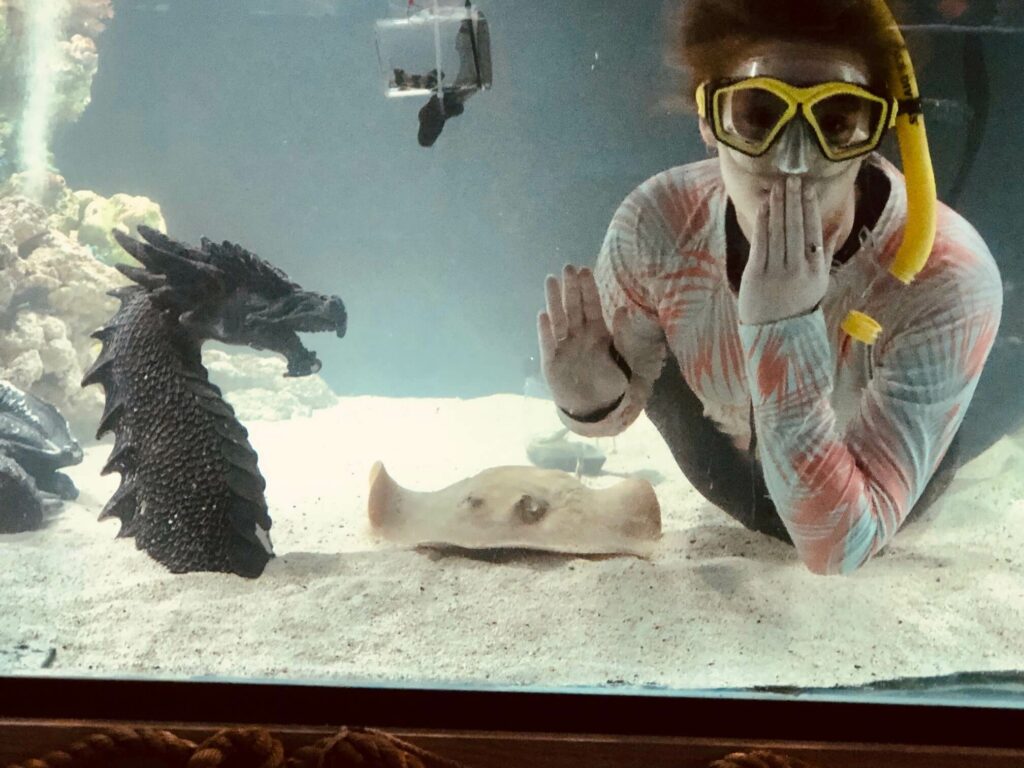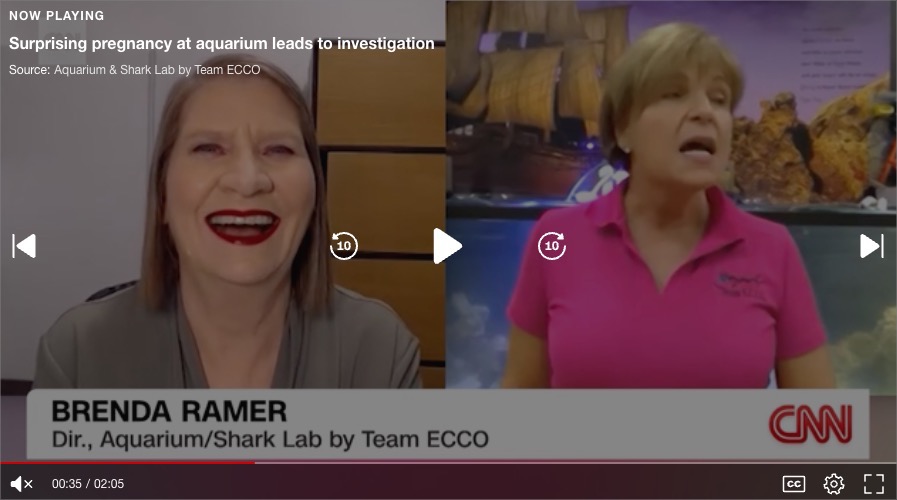Many of you out there know that running the NC Science Trail is a labor of love for me. As a scientist who had great opportunities to see some pretty amazing things when I was a kid, things that made me want to be a scientist, I want to help provide those same opportunities for others. Enter: the Aquarium and Shark Lab by Team ECCO in Hendersonville, NC. They were actually the first partner I highlighted almost a year ago on our brand new website blog, and they are returning to us with an incredibly cool story of sea creatures with reproductive abilities that, at this point in time, have rarely been document by science. Let’s talk about parthenogenesis.
First, you should know that parthenogenesis is asexual reproduction of an organism in which a female produces an embryo without a male present to fertilize the egg. This means the offspring are, typically, all female, and this occurs in a situation where there are no males present (i.e., zoo/aquarium usually, or perhaps a secluded natural environment like the deep sea). It’s a survival mechanism that allows for the preservation of a species. We will be clear these individuals are being very well cared for, but ecologically speaking, we generally only see this occur in a situation where nature has a “concern” over a lack of reproducing certain genes. So, of course, nature always finds a way.

News from the sea in WNC:
Please be aware of exciting marine studies and events at our small nonprofit organization, Team E.C.C.O. We are located in the heart of the Blue Ridge Mountains, where 65% of the community members never see the ocean.
We house small sharks of 4 species and one round ray. Our oldest female shark, Epa, began laying eggs in 2015 and has not stopped. She has produced over 900 eggs, with 14 developing embryos via parthenogenesis. Only one has made it to hatching.
Our 3 yr old epaulet, Shelby, is now showing signs of carrying eggs – we will ultrasound her next week if eggs do not release by Tuesday.
We have been doing ultrasound on our ray, Charlotte, since September, when she began to “swell”. We documented multiple “growths” internally and initially thought she had a cancer. I reached out to Dr. Rob Jones, the Aquarium Vet, and he identified the “growths” as eggs. We have no male ray. He said there have been few cases of parthenogenesis in rays.
Then we had another thought, in mid July 2023 we moved two 1-year old white-spot bamboo males into that tank. There was nothing we could find definitively about their maturation rate, so we did not think there would be an issue.
We started to notice bite marks on Charlotte, but saw other fish nipping at her, so we moved fish, but the biting continued.
Then our light bulb went off – sharks bite to mate – did one of our young males mate with her?
We have definitive video of the most current ultrasound showing two if not three pups. DNA will need to be done after the pups birth – unless we have visual cues about a mixed breed.
We anticipate deliver of the pups around the new moon 2/9/2024. All updates will be posted on our website and Facebook page.
We teach ocean based outreach (6,500 participants in 2023), and house the first inland aquarium in NC
( 11,000+ visitors in 2023). Our team is young, committed, and very excited.

********
February 16, 2024
I need to provide a quick update to this post, and I’m sure there will be additional updates as we find out more about both the shark and ray births. Brenda Raymer was interviewed by CNN earlier in the week, so I wanted to attach a link for those who are interested in following this incredible story a bit further.
*This video plays with sound.
